The History of Neurotrophins by Rita Levi-Montalcini
Dealing with email
Avoiding distractions is perhaps the biggest keys to success in any profession, but especially for scientists. Perhaps the biggest distraction of them all is email. If you’re like me then you probably receive 50-100 emails per day (on average this is 5-10 per working hour). This constant stream can kill your focus if you allow it to. Here are the things that I do to deal with email:
- 1. Turn off automatic notifications on your computer and phone
- 2. Keep your email program closed most of the day.
- It’s ok to peek in on your email while waiting in line for coffee or something like that but for the most part you want to ignore it.
- 3. Only answer emails once or twice a day and keep your replies short.
- 4. Try to clear your email inbox every day.
- This is called inbox zero which has been described by Merlin Mann of 43 folders and is a modification of of David Allen’s getting things done (GTD) system. Videos are embedded below. This system provides a framework for deleting, delegating, and responding to emails
- 5. Use text expander for bits of same text that repeatedly send off.
Trust me if you incorporate these tips into your workflow, your life will change dramatically.
Setting goals part V: Reverse scheduling (weekly)
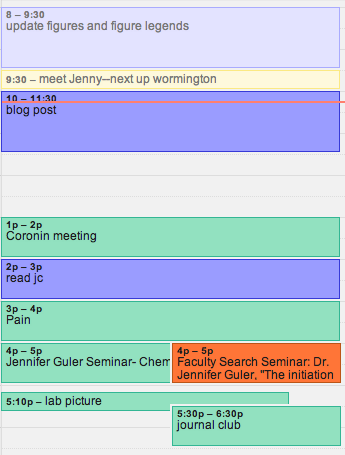 The best way to take advantage of the Pareto principle and Parkinson’s law is through reverse scheduling. Reverse scheduling refers to starting with a project due date and scheduling backward as opposed to forward scheduling which begins with a project start date and you work until it is complete. This is a subtle but important difference. The things that you want to do (defined in your pie chart) are the things that you schedule first. The things that you have to do but are not necessarily high impact can fit into other places.
The best way to take advantage of the Pareto principle and Parkinson’s law is through reverse scheduling. Reverse scheduling refers to starting with a project due date and scheduling backward as opposed to forward scheduling which begins with a project start date and you work until it is complete. This is a subtle but important difference. The things that you want to do (defined in your pie chart) are the things that you schedule first. The things that you have to do but are not necessarily high impact can fit into other places.
The Pareto principle and Parkinson's law
The Pareto principle
In the late 1800’s Vilfred Pareto created a power law probability distribution, which according to wikipedia was “built on observations of his such as that 80% of the land in Italy was owned by 20% of the population”. The Pareto principle (80-20 rule) has become popular over the last several years in the context of business and economics. People like Tim Ferriss have begun exploring this concept for personal efficiency. The way that the rule applies to you is that 20% of what you do goes toward accomplishing the majority of your goals. Wouldn’t it be wonderful if you cut out the 80% of time that doesn’t do much for you and only spend time on things that are “high leverage” for achieving your goals?
A lot of people think of time as money. I would argue that time is much more valuable and finding ways to get some of your time back is huge. What’s necessary is to examine all of the activities that go into doing well in a class or on a research project and dissecting out the few key elements that lead to most of the outcome. Things that don't have a big impact toward your desired outcome should be avoided.
Disclaimer: This is not an argument for selfishness or avoiding departmental or lab activities. While there might not be a direct line between helping a colleague or going to a seminar toward achieving your ultimate goal, these things are actually high leverage and will come back to you in interesting and unexpected ways.
Parkinson’s law
Cyril Northcott Parkinson once wrote jokingly that “Work expands so as to fill the time available for its completion”. This idea has really taken off in the productivity blogosphere and I think the spirit of the idea works particularly well for scientists. The implication of Parkinson’s law is that it’s hackable. What happens if you figure out the time it would normally take for a task and only give yourself half of that to complete it? What about a quarter of the time? It is an interesting exercise to figure out how quickly you can actually get through a task. Chances are that a task will still get done and that it will still be pretty good although maybe not perfect. This idea becomes even more powerful when coupled with the 80/20 principle. This boils down to avoiding distractions so that you can have intense focus and concentration for one hour at a time. This idea is discussed at length here:
http://calnewport.com/blog/2009/06/22/on-the-value-of-hard-focus/
For more info on how to use Parkinson’s law:
http://lifehacker.com/262343/parkinsons-law-and-the-4+hour-workweek
http://www.lifehack.org/articles/productivity/how-to-use-parkinsons-law-to-your-advantage.html
This is an interesting read on the bastardization of Parkinson’s law:
http://calnewport.com/blog/2008/06/11/debunking-parkinsons-law/
Using Pareto and Parkinson in Combination:
Reading papers is a high leverage activity that will help you succeed. But this can take a lot of time if you allow it. For example, 5 journal articles in an evening would take 3 or 4 hours if you were to read them cover to cover. Maybe this isn’t necessary. Instead try reading the abstract, skim the intro, go through the figures and skim the discussion....this should take 15 minutes. As you’re going through it jot down questions and conclusions and there you go. You may not get all the nuances of the paper but 80-90% is a reasonable expectation. It is worth slowing down if there is a new technique or graph to understand. Making an investment to understand how experiments are done will pay off in terms of how fast you get through future articles. There is a lot of good advice out there for preparing for tests and getting through information efficiently. Check out the textbook method:
Setting goals part IV: Time pie chart-prioritizing
There are 168 hours in a week. It is important to decide how you want to allocate your time. As an exercise, I often create a pie chart to get a birds eye view of how I would like to spend my time. The key here is to create an ideal but not to get stressed out if things have to be moved around or if you can’t spend as much time as you would have hoped on a particular area. Here is what a typical weekly schedule for a first year of grad school might look like:
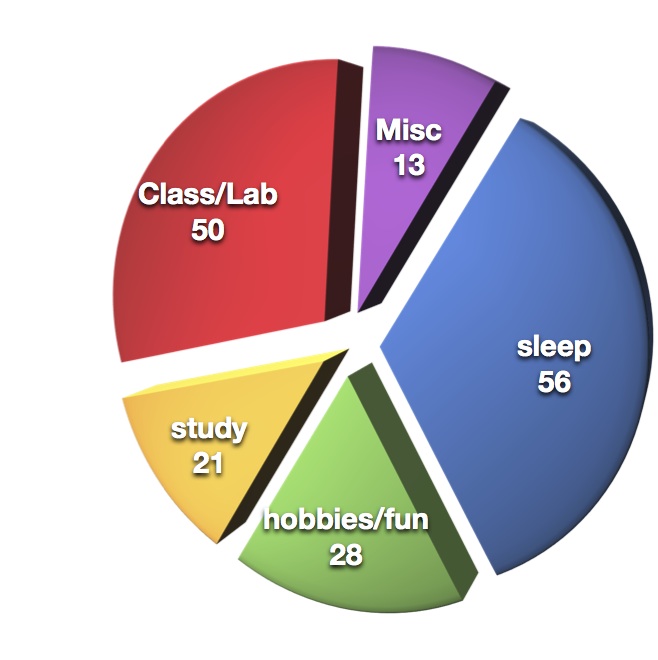
So now that you’ve figured out the optimal allocation of your time it’s time to look at your daily schedule. The next post will be about reverse scheduling.
Setting goals part III: making the granular goals actionable (monthly)
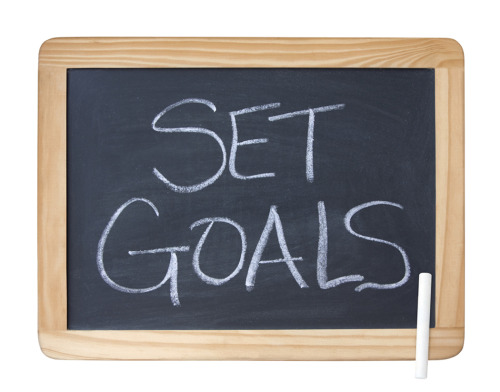
Now that you’ve identified the benchmarks required to get to your big goal, it’s time to make a plan of attack for each one. Sticking with the career version, lets worry about year 1 for now. Here’s what that might look like:
Career:
- Get a PhD, Find a top post-doc job
- Get straight A’s in classes (1st year)
- Intense study 2 hours per day
- http://calnewport.com/blog/category/tips-studying/
- Find a top thesis lab (1st year)
- Choosing where to rotate:
- Where have previous grad students gone after graduation?
- What do current student in the lab say about the lab?
- What’s the vibe in the lab?
- How well to grad students publish?
- How interested are you in the research?
- When rotating:
- Become engaged in the projects/ask everyone to explain their project
- Read all the key papers
- Ask questions based on the papers
- Be aggressive achieving the goals of the project?
- Become a great teacher (1st year)
- Get straight A’s in classes (1st year)
One of the best ways to go about putting these lists together is to find peers that have done really well at one or more of these tasks. Talk to them and figure out how they did it. By approaching it this way you have an opportunity to work smarter and not necessarily harder. This is a decent way to approach all of your goals....not just career. In the next post I’ll discuss how to figure out how to allocate your time.
Setting goals part II: making the big things granular (yearly)
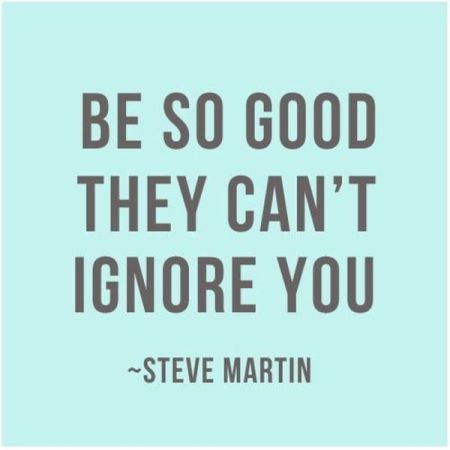
The next trick is to break the big goals down into more manageable bite sized pieces. If one of your goals is to get a PhD, then you will have to break down the steps required to get there and set up a timeline for when these things have to be done. Here’s what that looks like:
Career:
- Get a PhD, Find a post-doc job
- Survive classes (1st year)
- Find a thesis lab (1st year)
- Survive teaching (1st year)
- Pass Quals (2nd year)
- Perform research/publish (2nd year-5th year)
- Write and defend thesis/graduate (5th year)
- Find a job/post-doc (5th year)
When asked about the key to success, the comedian Steve Martin responds “Be so good they can’t ignore you”. How this applies to you is discussed in depth by one of my favorite academic productivity bloggers, Cal Newport. The goal isn’t to win by a field goal...the goal is to completely crush it. Again this starts with the language that you use when you define your goals. Here’s what your updated goals might look like:
Career:
- Get a PhD, Find a top post-doc job
- Get straight A’s in classes (1st year)
- Find a top thesis lab (1st year)
- Become a great teacher (1st year)
- Crush Quals (2nd year)
- Do great research/publish 4 first author papers and 4 collaborative papers (2nd year-5th year)
- Have one of the best theses to ever come out of the lab/department (5th year)
- Find a top job/top post-doc (5th year)
The key is to not just be ambitious but to be overambitious. In order to keep your sanity while doing this you must realize that it is ok to come up alittle short. If your goal is to get a B in a course, then that is likely to be the best you’ll do. However, if you set out to get an A in a course and you end up with a B+ or A-, that’s still very respectable and you should be okay with that. It’s still much better than if you would have gone for the minimal goal. In the next post, I’ll discuss how to take these granular goals and make them actionable.
Nice primer on Jefferson and UVa
Setting goals part I: the big picture (5 years)
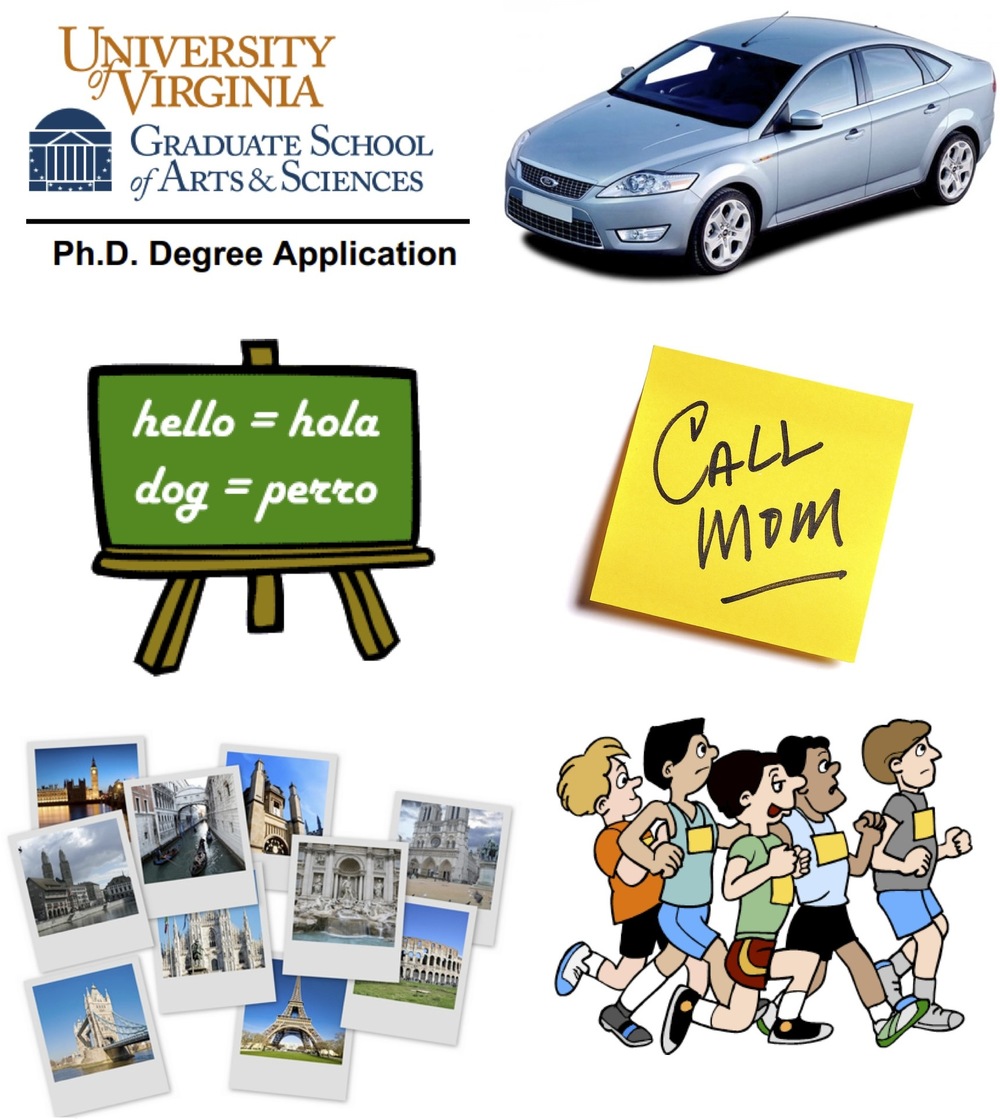
Before you can figure out how to get somewhere, you’ve gotta know where you want to go. This is a fairly simple but profound concept. Think of this as sort of a personal mission statement for the next 5 years. It can be extremely broad.
My advice is to get yourself into a reflective mode and answer the following questions:
- Where do you want to be in your career?
- What kind of hobbies do you want to pick up?
- Where would you like to travel?
- Is there a big ticket item that you would like to purchase?
- What kind of relationship do you want to have with family and friends?
- How will you manage personal health?
There is no one size fits all solution for setting goals. Writing out long-term goals will be different for everybody. The key thing is to identify what is most important to you? Be ambitious! Life is short so why not also include things on your bucket list? Here is what a 5 year goal sheet might look like for a typical first year graduate student:
Career:
Get a PhD, Find a post-doc job
Hobbies:
Learn Spanish, Learn Guitar
Travel:
Europe, South America
Purchase:
New Car
Family/Friends:
Hang out in the evenings, go to the bar, call mom on Sundays
Health:
Yoga, organic food, run marathon
You should make this list easily accessible from anywhere so you can add to it on moments notice. I prefer a google doc but an evernote file or a text file in dropbox would also be fine. In the next post I’ll discuss how to break these goals down a bit more.
For more on setting big goals check out: playing b-ball with obama
Getting things done (GTD) for scientists

A colleague and I are teaching a first year grad student course called “7 habits of highly effective grad students”, which of course is an homage to Stephen Covey’s great book “7 habits of highly effective people”. For the next 14 weeks I will be posting a series of blogs to accompany the 2 hour class. This is a series that I’ve been wanting to do for over a year and so I’m very excited about it. Several lifehacks will be discussed having to do with time management, science writing, quickly researching topics, scientific presentations, etc... As a preamble, enjoy this video on time management from the late great Randy Pausch (it's about an hour):
Disclaimer: Most of this is adapted for scientists from the work of productivity gurus that I admire like Tim Ferris,Cal Newport, Merlin Mann, David Allen and many others. I do my best to reference their articles when appropriate but you should definitely check out their blogs and books first hand.
sh*t grad students say
don't worry. We all have gone through it.
Musical Scientists
Check out these music vids that we've been enjoying.
Free shipping from amazon for students
This is pretty sweet. Free amazon prime membership for a year for anyone with a .edu email account.
GTD-Become an email ninja to reduce stress
Bumptop for mac has arrived
This might be worth checking out: http://bumptop.com/
Available for mac and pc.
Getting things done (GTD) for scientists-Intro
This is an introduction to a new series that I'm writing for the folks in my lab (and anyone else interested) on productivity in academic science. Nowadays the average grad student has to manage course work, thesis meetings, qualifying exams, writing papers/grants, and crushing it with experiments. In order to maintain sanity and not get completely overwhelmed all of these things must be approached in a sensible, balanced, and low stress way. The last series was about scientific productivity apps which will serve as the tools for a lot of what I'll discuss in the coming weeks. In this series I'll give examples of how I set goals and manage my time to accomplish these goals. I also think a lot about this and so I'm constantly trying to improve the things that are working for me (like batching tasks) and get rid of the things that aren't (like checking email 1000 times per day). I should also mention that this approach works for me but may not work for everyone so folks should take from it what they like and create their own system for getting things done (GTD). The most important thing is to have a GTD strategy..... having no strategy is a complete disaster. Tentatively, these are some of the upcoming post titles:
- The big picture: What are you about? What do you want? How are you going to get there?
- The plan: 3 months, 1 month, and 1 week
- The Day: Using reverse scheduling, Parkinson's law, and laser focus to get 14 hours of work done in 8 hours.
- The Sunday review
- Inbox zero to manage incoming information
- Multitasking is for chumps
google voice--one phone number to rule them all
I'm happy to say that all the phones in my life now use google voice. The gist of GV is that google gives you a number which can route to your cell, home, or office. Depending on who calls, you can have google ring any or all of your phones. Alternatively, if you don't really want to talk to the person, you can have it go straight to voice mail. Think spam filter for the telephone. There are lots of other little bonuses including:
- Free domestic calling
- Cheap international calling
- Machine voicemail transcription that is sent to your email (not super accurate but usually good enough)
- Do not disturb mode
- Free text messages
- GV widgets for website like the one at the bottom of this page (I have it set to go to voicemail)
Chris Pepper at Macworld.com also wrote a good article on this. Click here to check it out.
igoogle gadgets
I wanted to suggest afew useful gadgets for igoogle as folks get their feet wet. To find or browse gadgets, all you have to do is go to the add stuff link toward the top of the igoogle page. It's so nice to have all of your important information on one screen. I also like arranging all these little gadgets to get a little Feng shui action going for information flow. I'm sure you'll find lots of other cool gadgets and I would love to hear about any that you can't live with out.
Here are the gadgets that are loaded every time my browser opens:
Journal RSS Feeds for Google Reader
Here are some feed links that I use to get daily updates on what's new from these journals. Just pop each address into your google reader (under add subscription) and you are off to the races. If you click these links in firefox it should take you directly to google reader.
PLOS Biology
MCB
Nature Genetics
nature medicine
nature neuroscience
